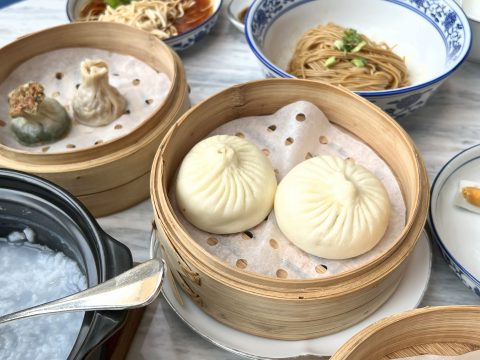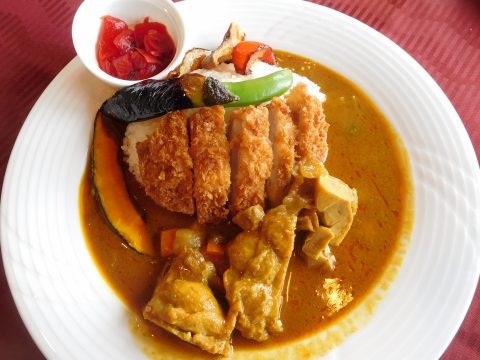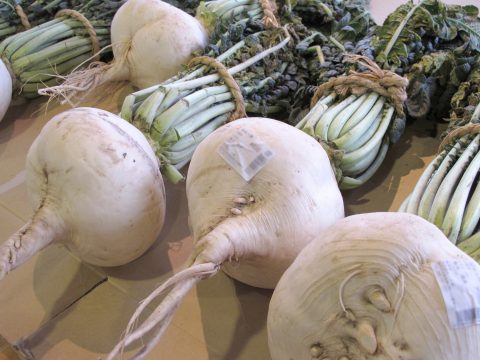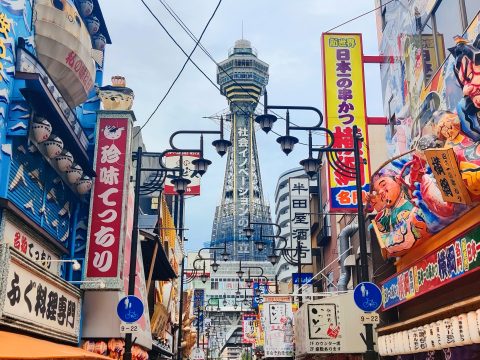Shūkatsu(就活)
WORK’IN JAPAN
22.04.2024
Spring in Japan. While most know the season for its bursts of colour from blossoming sakura trees, another occasion coincides with this time each year. The end of the school year. Elementary school students move off to junior high, junior high to high school, high school to university, and university to… The Working World. A daunting task. Stepping away from the comfort of an escalator education system that supports Japanese people until their mid-twenties. But, not to worry. In Japan, this time of year for final-year university students marks an important shift, a social graduation if you will. Students and their classmates set off on a new journey together; into the world of shūkatsu (short for shūshoku katsudō or “job hunting”).

Today, we’ll take a look at the process of shūkatsu in Japanese society, why it’s such a big deal, and what kind of doors it opens for young people in Japan.
The Process of Shūkatsu
Shūkatsu actually begins over a whole year before one is set to start a job, when, from the summer to the winter of two years before entry, companies allow students to participate in internships. Unlike internships in Western countries that tend to last at least two weeks or offer a small amount of compensation for labour, internships in Japan are closer to what we would consider work experience. Short 1-2 day trips to a company that rarely extend beyond introductions, a company tour, and general oversight of the kind of positions available. However, this internship stage often helps spark the all-important first step in the job-hunting experience: self-analysis.
Self-analysis
Self-analysis refers to when you start to consider what kind of job you actually want. What are your skills? What kind of place do you want to work? What kind of people do you get on with? And, most importantly, what do you think you’ll be good at? All very heavy and daunting questions, especially for young people. I’m sure we can all relate to the ill-fated visits to the careers advisor and being asked the dreaded question, “So, what do you want to do with the rest of your life?” Terrifying. But not to worry. In Japan, this phase is the longest of the shūkatsu experience. And with the added comfort of your peers being in the same boat, career advice, and researching what companies are looking to take on new employees, it gives all students an equal opportunity to consider what they want.

Application
Then, from March until June of the next year, roughly one year before job placement starts, application “entry sheets” are sent in. In this stage of the application, entry sheets are submitted to the companies of choice. An entry sheet is a lot like a CV, it includes the applicants’ personal information like name, ID photo, and address, and a short self-description of why the applicant wants to work for this company and how they will fit the role. They are typically only required for entry-level positions but don’t be fooled. Most companies filter through the majority of their applicants this way.
At the same time as kicking off the application process, companies will hold seminars for prospective applicants. These are not only places for applicants to ask specific questions about the company but also for companies to scout out favourable applicants.

Screening
From June to September is the screening stage. It is at this stage that selected candidates are invited for an interview. Candidates are given 2-3 interviews on average, each time the number of applicants is narrowed down. Some companies also issue tests as a part of the interview process to make sure you know your stuff!
Onwards from interviews, nainaitei 内々定 or preliminary job offers are issued. These are not official acceptances, but more a signifier that you are a top candidate for the job. By October, interview results will be out and most candidates will have landed a job.

What’s The Deal With Shūkatsu?
So why is this all such a big deal? It might seem a bit bizarre, but this uniform streamlined process of job hunting. But it actually has some interesting historical roots.
This system was developed by Keidanren (at the time, Japan’s biggest business lobby, representing over 1,300 major Japanese corporations) in 1953, the shūkatsu system emerged in response to labour shortages during the post-war period of rapid economic growth. As the population of university graduates also rose post-war, it made sense to create a system that directly funnelled skilled people into appropriate sectors. The system creates a symbiotic relationship which offers new graduates a promise of lifetime employment and stability in employees to Japanese firms in return. (1) (https://www.bbc.com/worklife/article/20190731-why-japans-shkatsu-is-disappearing-for-japanese-youth).
What Doors Does This Open?
An important aspect of shūkatsu for those who participate is the networking opportunities it brings. Networking plays a bit part in shūkatsu, frequently dictating a candidate’s triumph. Making connections through informal interviews, events, and social gatherings can seriously improve your chances of getting a job offer. The “senpai-kohai” (senior-junior) relationships and connections formed in university years are particularly influential in navigating the competitive job market.
There are also many perks to securing a job straight out of university. As mentioned before, joining such companies as a fresh graduate can secure a lifetime of employment, cutting out anxieties about job hunting in later life and giving people a sense of stability.
That’s not to say that the system doesn’t come without its criticisms. In recent years, younger Japanese people have begun looking for more flexible options in employment, and the idea of giving one’s whole life to a company and working up from the bottom is losing some appeal. But who’s to say that this system can’t be adapted to suit the growing demand for a life of options? Perhaps, in years to come, this system will evolve to incorporate job transfers later in one’s career.

The system of shūkatsu is a fascinating look into Japanese business culture. It illustrates some key ideas that will be present wherever you go. Ideas of loyalty and service in the picture of a greater whole. But also a sense of security in employment that can come from working in Japan.

Ella Clayton
Ella Clayton is a food writer, traveler, and all-around Japan enthusiast. Studying in Japan for her bachelor’s degree, she has ventured from Kansai and Kanto, and can say definitely: Osaka style Okonomiyaki is the best.
Read previous articles by the writer
Read latest articles
KEYWORDS
- # PICKPICK
- # Resume
- # alcohol
- # Rice
- # Soup
- # winter food
- # Fast Food
- # seafood
- # spicy foods
- # raw food
- # fermented food
- # Transportation
- # MEAT
- # Edo culture
- # suits
- # clothing
- # drink
- # fish
- # seasoning
- # Japanese New Years Foods
- # Toshikoshi soba
- # Osechi Ryori
- # Ozoni
- # Christmas
- # Japanese fusion pasta
- # Wafu Pasta
- # Japanese Hot Pot
- # なべ
- # 鍋
- # Miyazaki
- # Chicken Nanban
- # Karamen
- # Autumn Wagashi
- # Mushi-yokan
- # Imo-yokan
- # Japanese Autumn Fruits
- # Autumn
- # Vending Machine
- # fall
- # dango
- # Chestnut rice
- # saury
- # Mushroom
- # Rice vinegar
- # Japanese condiments
- # 調味料
- # Sake
- # Mirin
- # Soy sauce
- # Japanese Noodles
- # Udon
- # Ramen
- # Yakisoba
- # Soba
- # Japanese Seaweed
- # 海藻
- # かいそう
- # Payslip
- # Training
- # Japanese summer foods
- # 和菓子
- # Wagashi
- # ryokucha
- # 夏
- # 飲み物
- # Ramune
- # ラムネ
- # Pokari Sweat
- # ポカリスエット
- # Calpis
- # カルピス
- # Mugicha
- # ume
- # 梅
- # うめ
- # umeshu
- # job hunting
- # tofu
- # Recruitment in Japan
- # miso
- # Japanese cuisine
- # Yellowtail and bonito
- # Children’s Day
- # Kashiwa Mochi
- # Chimaki
- # fruits
- # Kusamochi
- # Types of Agriculture in Japan
- # bread
- # パン
- # パン屋さん
- # japanese bread
- # shokupan
- # meal blead
- # anko bread
- # 桜
- # さくら
- # cherry blossom
- # visa
- # hanami
- # omotenashi
- # sakura
- # おもてなし
- # Japanese hospitality
- # oshibori
- # wet hand towel
- # hand towel
- # restaurant
- # Commuting in Japan
- # Women-only cars
- # Exit gate
- # japanese train
- # train
- # valentine
- # Japanese sweets
- # 朝食
- # Japanese Breakfast
- # Breakfast
- # Japanese
- # 日本
- # healthy
- # persimmons
- # hoshigaki
- # HR
- # work in Japan
- # jinji ido
- # corporate systems
- # Japanese work culture
- # bento
- # ekiben
- # shinkansen
- # omiyage
- # train station
- # Japanese culture
- # work culture
- # mentaiko
- # umeboshi
- # Japanese snacks
- # potato chips
- # Japanese potato chips
- # Japanese writing
- # seaweed
- # konbu
- # ocean foods
- # shio konbu
- # dashi
- # miso soup
- # food processing
- # pear
- # nashi
- # sweet potato
- # japanese sweet potato
- # stingray
- # satsuma imo
- # food value chain
- # homecooking
- # agriculture
- # Japanese homecooking
- # farming
- # nikujaga
- # shojin ryori
- # meat and potatoes
- # traditional foods
- # comfort food
- # buddhist food
- # manufacturing
- # factory
- # eihire
- # vegetarian
- # food and beverage
- # izakaya
- # yatai
- # japanese festival
- # taiyaki
- # matsuri
- # summer
- # Ikayaki
- # smart agriculture
- # shaved ice
- # kakigori
- # かき氷
- # summer dessert
- # Japan
- # Japanese foods
- # dessert
- # fruit
- # matcha
- # icecream
- # Pikcup
- # Pikc up
- # Pcikup
- # skilled labor visa
- # working visa japan
- # Dineer Table in Japan
- # Japanese manner
- # Japanese food
- # Japanese Table Manner
- # Chopsticks
- # Japanese traffic signs
- # traffic information
- # road rules in Japan
- # chocolate
- # green tea
- # Osaka
- # Work Japan
- # Japanese company
- # ikura
- # sushi
- # nigiri
- # wasabi
- # PCIK
- # PICK UP
- # PICK
- # PICKUP








